 In each succeeding term the coefficient is found by multiplying the coefficient of the preceding term by the exponent of a in that term, and dividing by the number of the preceding term. In each succeeding term the coefficient is found by multiplying the coefficient of the preceding term by the exponent of a in that term, and dividing by the number of the preceding term.  The Franklin Elementary Algebra - Page 159by Edwin Pliny Seaver, George Augustus Walton - 1881 - 297 pagesFull view The Franklin Elementary Algebra - Page 159by Edwin Pliny Seaver, George Augustus Walton - 1881 - 297 pagesFull view - About this book
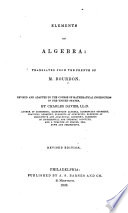 | Charles Davies - Algebra - 1842 - 368 pages
...term is formed from the co-efficient of the preceding term. The co-efficient of any term is formed by multiplying the co-efficient of the preceding term by the exponent of x in that term, and dividing the product by the number of terms which precede the required term. P(m—n+l)... | |
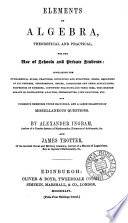 | Alexander Ingram - 1844 - 262 pages
...and —x* raised to the nth power is either + *""* or — *mn, according as n is even or odd. is got by multiplying the coefficient of the preceding term...that term, and dividing the product by the number of that term. 5. That when the signs of both quantities are alike, all the terms have the sign + ; but... | |
 | Warren Colburn - Algebra - 1844 - 280 pages
...+ 7axt+xt Examining the formation of the above coefficients, we observe, that each coefficient was found by multiplying the coefficient of the preceding' term by the exponent of the leading quantity a in that term, and dividing the product by the number which marks the place of that term. Thus the... | |
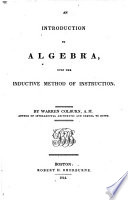 | Warren Colburn - Algebra - 1844 - 280 pages
...examining the other terms, the following general rule will be found true. Multiply the coefficient of any term by the exponent of the leading quantity in that term, and divide theproduct by the number that marks the place of that term from the left, and you will obtain... | |
 | Charles Davies - Algebra - 1845 - 382 pages
...co-efficient of any term from the co-efficient of the preceding term. The co-efficient of any term is formed by multiplying the co-efficient of the preceding term by the exponent of x in that term, and dividing the product by the number of terms which precede the required term. For... | |
 | Charles William Hackley - Algebra - 1846 - 542 pages
...(x-|-a) 8 is 2, of (.rf a) 6 is 6, of (x+a) 7 is 7. IV. The coefficient of any term after the second may be found by multiplying the coefficient of the preceding term by the index of x in that term, and dividing by the number of terms preceding the required term. Thus, in... | |
 | Thomas Tate (mathematical master.) - 1847 - 138 pages
...is 4, the same number as the given power. The coefficient of the third term is 6, and it is obtained by multiplying the coefficient of the preceding term by the exponent of the a, and dividing this product by 4x3 2, the number of this term ; thus — ~ — =6. The coefficient... | |
 | George Roberts Perkins - Algebra - 1847 - 432 pages
...the coefficients may be found in suecession by the following RULE. Multiply any coefficient of any term by the exponent of the leading quantity in that term, and divide the product by the exponent of the following quantity diminished by one, and the result will... | |
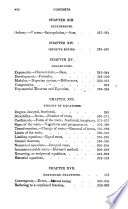 | Stephen Chase - Algebra - 1849 - 348 pages
...second term (ie of both x and a) is n. (5.) The coefficient of any term whatever after the first is found by multiplying the coefficient of the preceding...of the leading quantity in that term, and dividing by the number of terms preceding the required term. a.) The exponent of the leading quantity becoming... | |
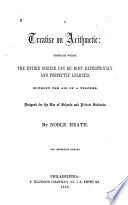 | Noble Heath - 1855 - 468 pages
...coefficient of any term is found by multiplying the coefficient of the term preceding it, by the index of the leading quantity in that term, and dividing the product by the number which shows the number of te*rms preceding the term the coefficient of which is sought. 449. The number... | |
| |